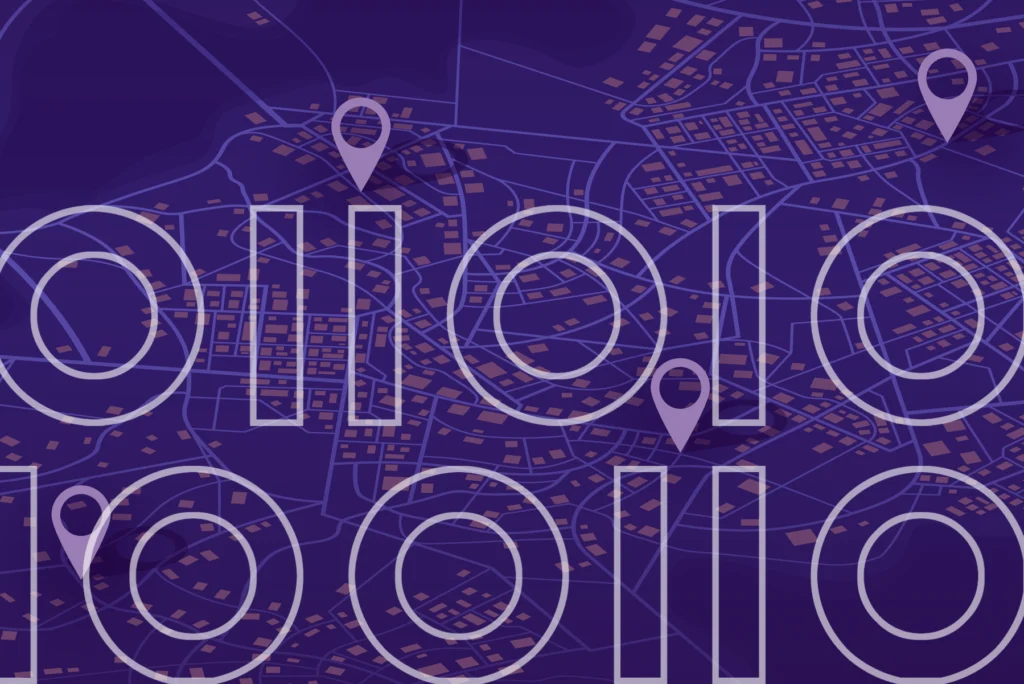Cloud native technology has undoubtedly been one of the primary drivers of innovation over the past two decades. It is only relatively recently, however, that the transition to cloud applications has truly reached critical mass in the insurance industry as the benefits of lower costs, centralized storage, agility, and failover capabilities have prompted IT leaders to shift more of their critical business applications, including location intelligence solutions, to the cloud.
Some industries have been quicker to make the move than others, seeing opportunities to collect and process data in real time, as well as to engage with customers around digital platforms that naturally lend themselves to cloud native integration.
For insurance, though, two particular trends stand out as fitting very naturally into the cloud – namely data-enriched analytics and data-enriched artificial intelligence and machine learning (AI/ML). These technologies tend to be especially process-intensive, and in many cases, they require relatively short bursts of heavy-duty computing power interspersed with longer periods of relatively low processing activity.
For an on-premises deployment, that means you’ll need a great deal of computing horsepower, but you’ll only need it on occasion (relatively speaking). In other words, that capacity may sit idle for some of the time. That’s just not an efficient use of resources.
Cloud capacity, in contrast, offers virtually unlimited elasticity; you can start at zero and scale up your computing power quickly and easily. When you no longer need that capacity, you can scale it back down just as readily. For several years, technology experts have grown accustomed to a model in which computing power can be rented on a per-minute basis. Google Cloud Platform has taken it a step further, billing its services in one-second intervals.
For process-intensive activities like analytics and AI/ML, the financial benefits of this model are clear. Like any other business model that revolves around rental rather than ownership, cloud computing allocates shared resources on a pay-as-needed model. For analytics, that makes it a game-changer.
Data-enriched analytics and AI/ML
As data analytics has matured, innovative organizations are discovering a myriad of new ways to take advantage of all this computing power. For machine learning algorithms, in particular, data enrichment provides exponential benefits that can lead to new ways of creating business value. At Precisely, we have led the way on location intelligence, curating the largest and most accurate body of location-based information available.
Precisely associates every location, including individual addresses, with a unique and persistent identifier that we call the PreciselyID. That, in turn, unlocks a vast amount of geospatial information that our customers can use to feed machine learning algorithms and advanced analytics. For any given location, we can provide up to 10,000 different attributes to enrich and enhance existing data sets. That opens the door to discovering causalities and correlations that might never have been noticed before.
Read our case study
Insurance Company Uses Geolocation Accuracy to Lower Policy Risks and Improve Pricing
Learn how insurance companies are using Precisely’s cloud-ready location intelligence and data enrichment solutions to lower policy risks and improve pricing.
Let’s look at a few examples of how Precisely’s insurance customers are using location intelligence with cloud analytics to add value.
Property insurance is largely driven by the ability to accurately assess risk. Those who can achieve higher levels of precision in that process can price their policies competitively while avoiding excessive claims payouts. As you might expect, properties located along a coastline are subject to a greater risk of damage from hurricanes and other severe weather events. By understanding the distance from the insured property to the nearest coastline, an insurer can more accurately calculate the risks to the property from such events.
Performing that kind of analysis requires a few key capabilities, beginning with accurate and reliable geocoding (that is, resolving an address to a specific location, or even a specific location within a larger lot denoted by the address). Next, it requires a way of connecting that location to an accurate and comprehensive body of location-based information. This is achieved using our unique and persistent identifier, the PreciselyID. Finally, if an insurer needs to calculate the distance to the coastline for a large number of properties, it requires the kind of substantial computing power made possible (and more affordable) by cloud computing.

A similar scenario exists for calculating the distance between insured properties and nearby fire stations. This one is a bit more complex, though, because for any given property there may be multiple fire stations that could potentially respond to an emergency there. Moreover, the nearest station is not necessarily the one that can respond fastest. Traffic patterns (including one-way streets), natural barriers, and traffic congestion can all affect response times.
Using Precisely’s location intelligence technology and data enrichment, we can calculate the distance between any given property and the nearest two, three, or more fire stations. In addition to the driving distance, we can determine average drive times between each of the stations and the insured property for different times of the day.
Given the richness of the geospatial data we provide, the possibilities are virtually endless. Wildfire risk, for example, can be impacted by a wide range of factors, including distance to combustible vegetation, wind patterns, the direction of nearby roads, roofing material, and even elevation. The damage of risk from earthquakes, likewise, can be better understood by analyzing the soil density on a property.
Location intelligence in the cloud
As AI and machine learning have matured, business leaders are seeing the benefits of feeding AI/ML algorithms with an increasing volume of information. After all, these technologies can identify patterns that might not otherwise be apparent. The more information they have to work with, the better.
As the leader in data integrity, Precisely understands the potential of data enriched AI/ML in the cloud. We have been on the leading edge of this trend, providing native cloud services to help our customers drive business value and competitive advantage using accurate, trustworthy data.
Precisely integrates with a wide range of leading technology platforms for data analytics and AI/ML, including containerization technology such as Kubernetes, as well as data analytics tools like Apache Spark and Databricks. Our products integrate with Hadoop, Snowflake, Redshift, Kafka, and other tools and platforms that serve as components of an overall landscape for enterprise data analytics.
Read this case study to learn how insurance companies are using Precisely’s cloud native location intelligence and data enrichment solutions to lower policy risks and improve pricing.







